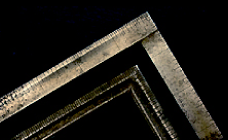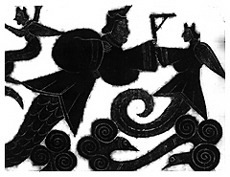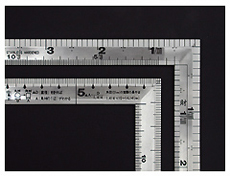Marking Tools [sumikake-dougu]
Sumikake-dogu
Sumikake-dogu

It is not clear when kushaku began to be used, but in China, the origin is quite old because the legendary first emperor, Fushiki, is engraved on the relief of the stone chamber of the Wu clan in the latter Han Dynasty, and probably came to Japan at an early stage in ancient times along with continental architectural techniques. It was truly believed among architects before the early modern era that Prince Shotoku, who worshiped as an ancestor god, invented the kushaku, but this is superstition.
By the way, it is said that there are 10 uses for kyokushaku. It goes without saying that it becomes Ruler when measuring right angles and dimensions and writing lines, but it is a multi-functional tool, such as measuring the gradient, dividing the straight line, applying the idea of a gradient, using a gradient, a gradient, a gradient, and a gradient. One of the most notable features is the function of the back eye (corner), which is √2 times the scale of the front is engraved on the back side, so that the diagonal side of the right triangle is required without calculation. This function is very useful when inking the corner of the building, but the carpenter in Japan has mastered the technique of solving the complicated deposit of the roofing material in the corner using the back of the back, and has been highly systematized by calling it "kiku" technique. However, it seems that the acquisition was extremely difficult, and the phrase "carpenters and sparrows cry in the eaves" comes from here.

The first legendary emperor, Fushi Xizhi (China, Gohan, and Wushishishi (stone chamber of samurai))

Current kushaku (back side, stainless steel)
Basic information
Special Exhibition
Permanent exhibition